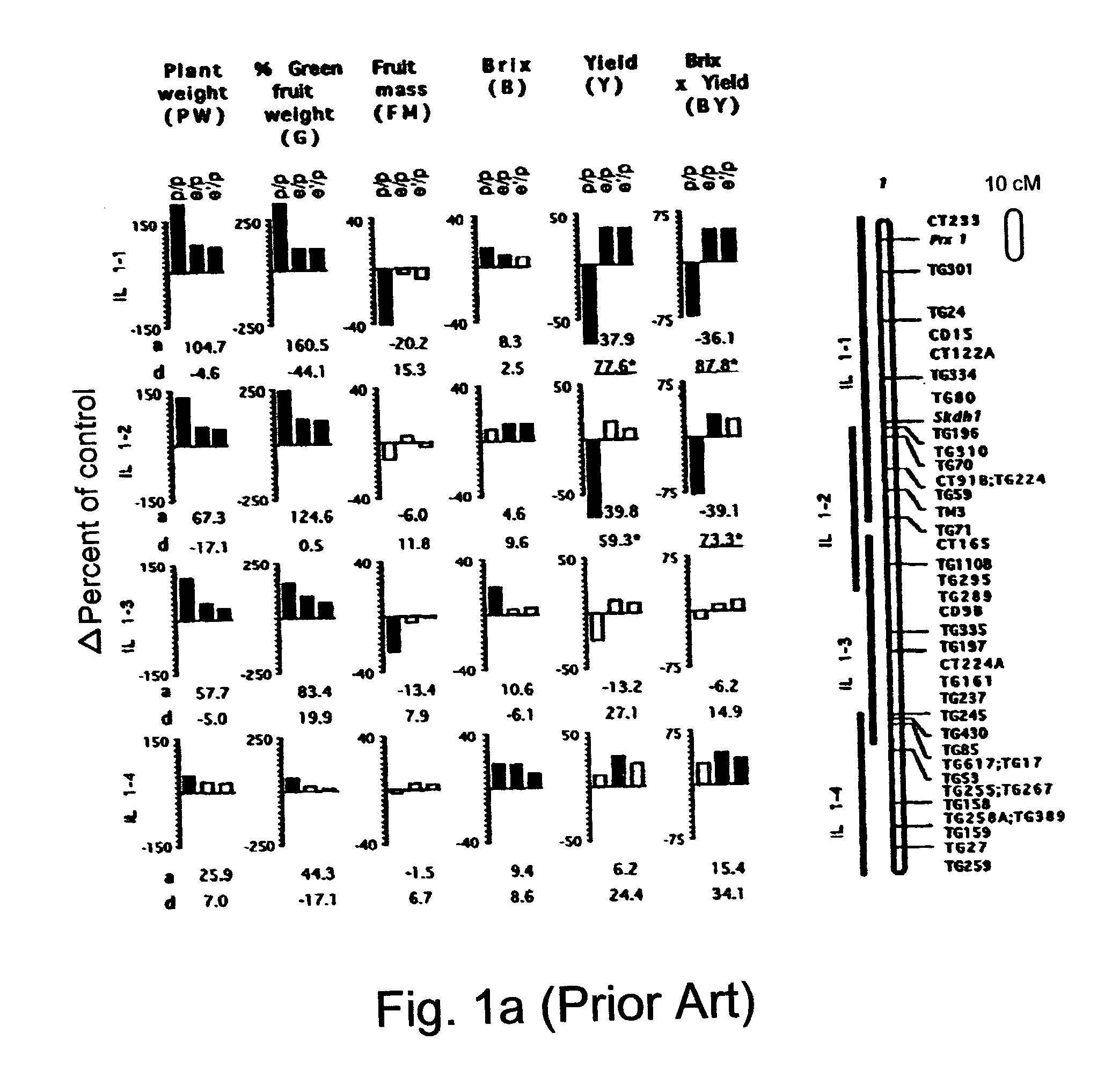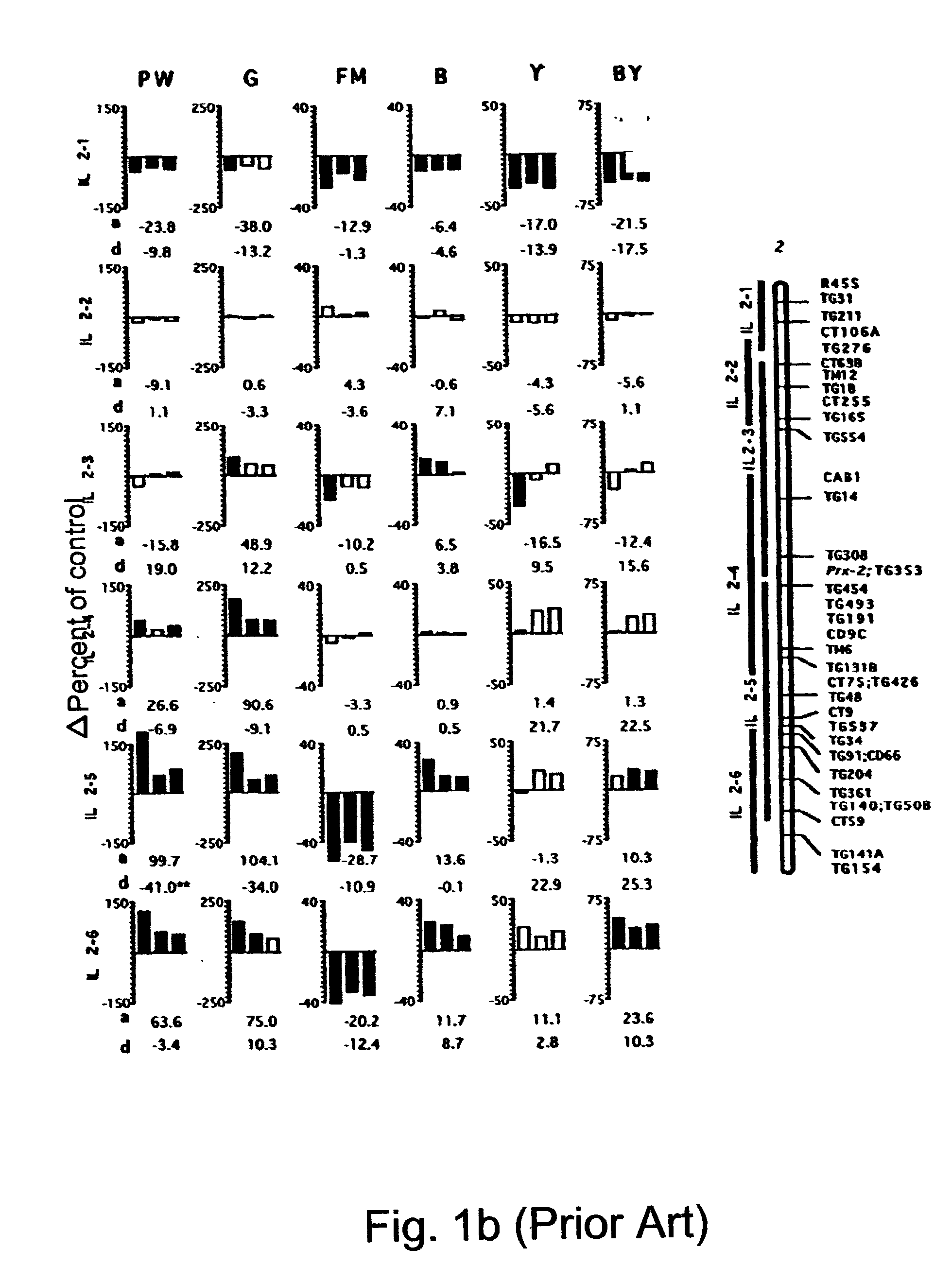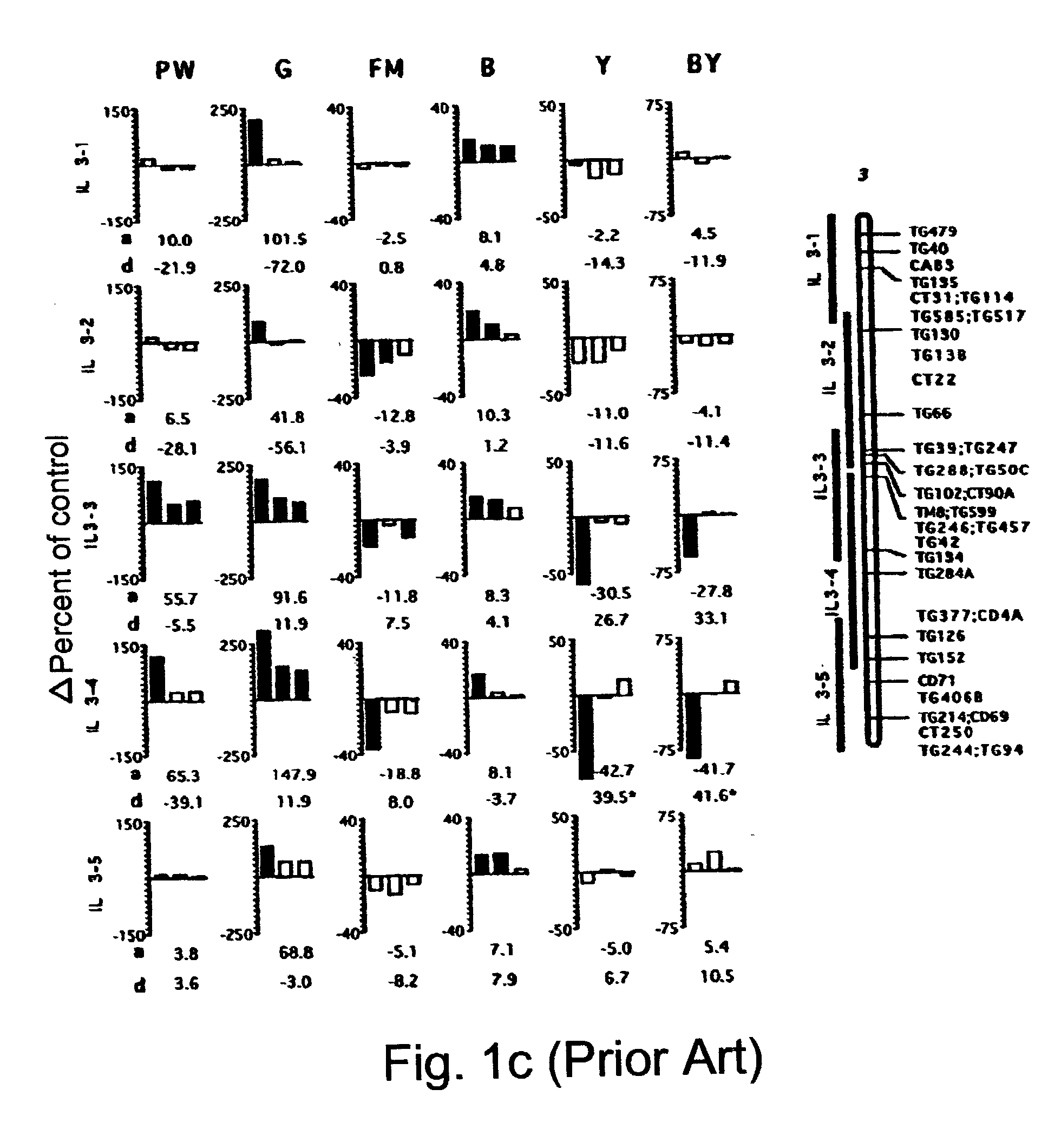Cultivated tomato plant having increased brix value and method of producing same
a technology of cultivated tomato and brix value, which is applied in the field of cultivating tomato plant, can solve the problems of difficult application difficult to influence heritability of quantitative inherited traits, and difficult use of direct gene transfer in manipulating these traits
- Summary
- Abstract
- Description
- Claims
- Application Information
AI Technical Summary
Problems solved by technology
Method used
Image
Examples
example 1
[0094] In previously published results (Eshed and Zamir, 1995, ibid) an L. pennellii introgression line (IL) population was designed in order to generate QTL-NILs. This IL population consisted of 50 lines, each containing a single homozygous restriction fragment length polymorphism (RFLP)-defined wild-species chromosome segment. Together these lines provided complete coverage of the tomato genome and a set of nearly isogenic lines (NILs) to their recurrent parent, the processing-tomato cultivar M82 (Rick et al., TGRC stock lists, Rep. Tom. Genet. Coop., 45, 53, 1995) (FIG. 1). The genetic assumption underlying the identification of QTL using the NILs was that any phenotypic difference between an IL and its nearly isogenic control plant is due to a QTL that resides on the chromosome segment introgressed from L. pennellii. The minimum number of p<0.05-significant QTL affecting a trait in the ILs was calculated on the basis of the following assumptions: (i) each IL affecting a quantita...
example 2
Epistatic Interactions
[0111] The study described in Example 1 (Eshed and Zamir, 1995, ibid) served as a basis for testing epistatic interactions between QTLs. Thus, 10 ILs were selected, some of which include QTLs that affect the measured traits in the heterozygous condition in various directions relative to the control the results obtained were reported.
[0112] The ten homozygous ILs were crossed in a half diallele mode and the phenotypic values of the 45 double heterozygotes were compared to the respective single heterozygous ILs and M82. The results which were previously reported by Eshed and Zamir (1996, ibid) indicate that QTL epistasis is prevalent and is generally less than additive.
Phenotype of the Selected Single Introgression ILHs
[0113] In the complete IL population composed of 50 introgression line hybrids (ILHs) which was analyzed for five yield-associated traits, 81 of the 250 ILH.times.trait combinations (32%) were significantly different from the isogenic controls (p<0...
example 3
Separating the Positive Trait for High Brix Value from the Negative Traits of Percentage Green Fruit Yield and Internodes Length Through Marker Assisted Selection
[0133] As is described in Examples 1 and 2, the hybrid plants obtained from introgressing L. pennellii into a L. esculentum genetic background detected numerous QTLs associated with traits such as brix (B) and fruit mass (FM). However, these studies failed to isolate the QTL associated with brix from other QTLs which are associated with negative traits such as high percentage of green fruit yield and long internodes.
[0134] As such, while reducing the present invention to practice a hybrid plant (IL9-2-5) resultant from these studies was further introgressed into the genetic background of an L. esculentum cultivated tomato variety (M82) in efforts to isolate the QTL associated with brix from other QTLs responsible for these negative traits which are present in IL9-2-5, to thereby obtain a plant line bearing fruits characteri...
PUM
| Property | Measurement | Unit |
|---|---|---|
| Length | aaaaa | aaaaa |
| Fraction | aaaaa | aaaaa |
| Fraction | aaaaa | aaaaa |
Abstract
Description
Claims
Application Information
 Login to View More
Login to View More - R&D
- Intellectual Property
- Life Sciences
- Materials
- Tech Scout
- Unparalleled Data Quality
- Higher Quality Content
- 60% Fewer Hallucinations
Browse by: Latest US Patents, China's latest patents, Technical Efficacy Thesaurus, Application Domain, Technology Topic, Popular Technical Reports.
© 2025 PatSnap. All rights reserved.Legal|Privacy policy|Modern Slavery Act Transparency Statement|Sitemap|About US| Contact US: help@patsnap.com



